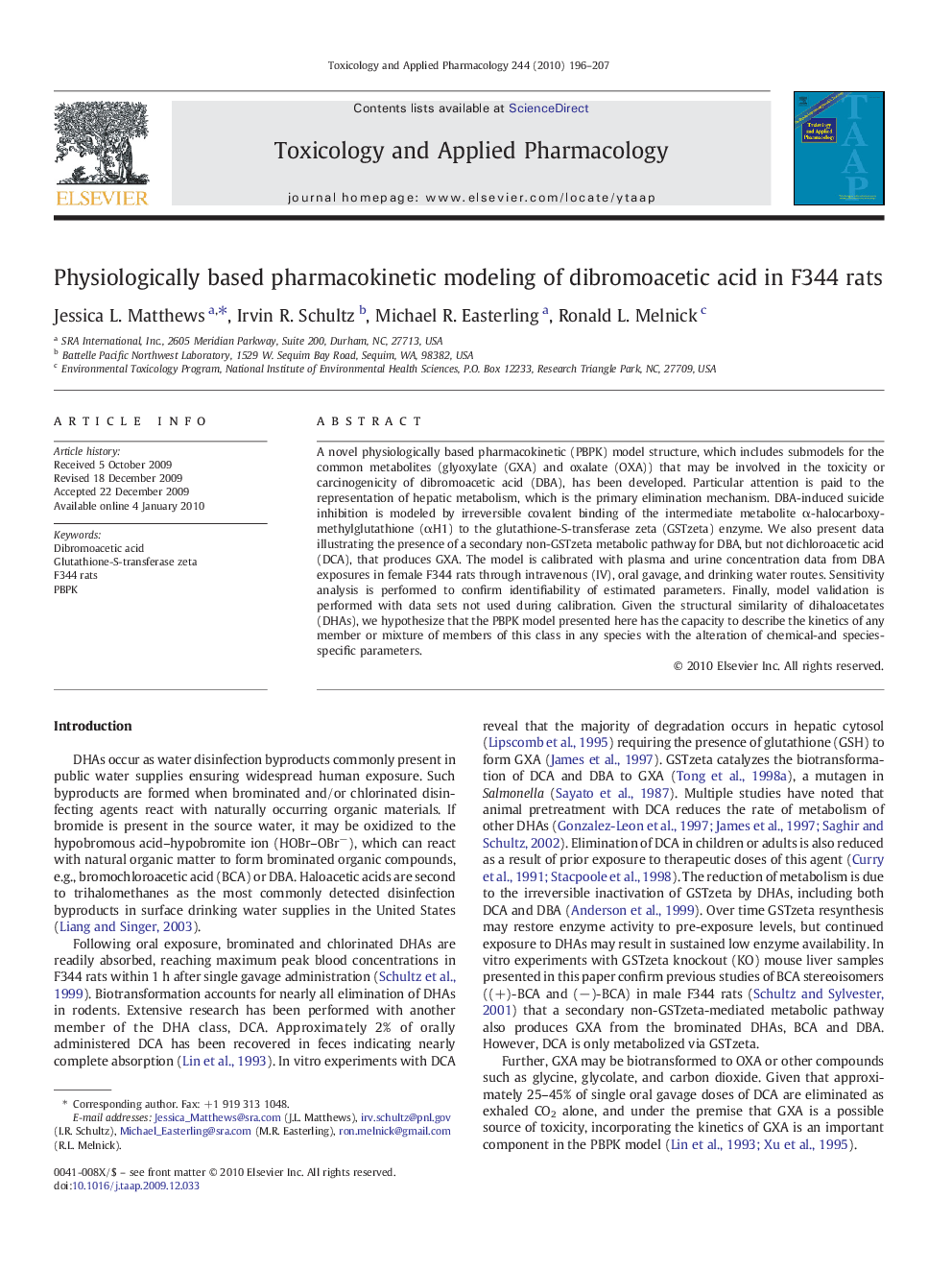| Article ID | Journal | Published Year | Pages | File Type |
|---|---|---|---|---|
| 2569714 | Toxicology and Applied Pharmacology | 2010 | 12 Pages |
Abstract
A novel physiologically based pharmacokinetic (PBPK) model structure, which includes submodels for the common metabolites (glyoxylate (GXA) and oxalate (OXA)) that may be involved in the toxicity or carcinogenicity of dibromoacetic acid (DBA), has been developed. Particular attention is paid to the representation of hepatic metabolism, which is the primary elimination mechanism. DBA-induced suicide inhibition is modeled by irreversible covalent binding of the intermediate metabolite α-halocarboxymethylglutathione (αH1) to the glutathione-S-transferase zeta (GSTzeta) enzyme. We also present data illustrating the presence of a secondary non-GSTzeta metabolic pathway for DBA, but not dichloroacetic acid (DCA), that produces GXA. The model is calibrated with plasma and urine concentration data from DBA exposures in female F344 rats through intravenous (IV), oral gavage, and drinking water routes. Sensitivity analysis is performed to confirm identifiability of estimated parameters. Finally, model validation is performed with data sets not used during calibration. Given the structural similarity of dihaloacetates (DHAs), we hypothesize that the PBPK model presented here has the capacity to describe the kinetics of any member or mixture of members of this class in any species with the alteration of chemical-and species-specific parameters.
Keywords
Related Topics
Life Sciences
Environmental Science
Health, Toxicology and Mutagenesis
Authors
Jessica L. Matthews, Irvin R. Schultz, Michael R. Easterling, Ronald L. Melnick,
